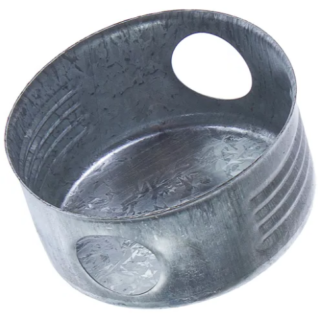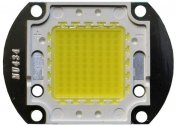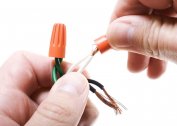Thanks to the rapid development of technology, the installation of electrical wiring has become easier, more durable and safer. This factor largely depends on how firmly the socket is fixed in the wall and what material its mounting box is made of. If a few decades ago, the accidental removal of the product from the panel was common, but now it is very rare, the reason for which is the installation error. The manufacturing and fixing technology of the products ensures reliable fastening of the devices and prevents the possibility of fires during overloads and short circuits. The main role here is played by the metal socket.
Classification of Sockets
Mounting boxes are intended for placement inside the walls of sockets, keyboard switches, control devices for household appliances.
Products are classified according to their intended use, depending on the material of manufacture and the construction of the walls:
- For concrete and brick. Non-combustible panels can be equipped with all types of products that suit property owners in terms of price and ease of installation. Wooden sockets are practically not used, since at a high cost they are unreliable in terms of strength and resistance to high temperature.

- For drywall. Used devices with special spacers that provide reliable fixation on thin plates. Another way is to mount on a mounting platform or steel frame. For this, the iron undergrowth is best suited, characterized by a sufficient margin of safety.
- For wood. In accordance with the requirements of GOST, the wood podrozetnik should be made exclusively of non-combustible materials. Such is metal and some types of plastic with appropriate technical characteristics.
One of the parameters of the installation boxes is their shape and size. The diameter of a standard cylindrical product is 71 mm, with a depth of 25 mm to 80 mm.
The most common products are round. They are used for mounting both single sockets and their combination in blocks. Rectangular boxes are used for mounting blocks combined with switches and telecommunication wires. Oval boxes are used to install triple and double pads.
Podrozetniki for wooden houses
Choosing podrozetniki for a wooden house, you should dwell on metal products. In most cases, black galvanized iron is used to make them. Given the features of the operation of the boxes, the use of copper or aluminum is not economically feasible.
In accordance with SNiP, for fire safety, open wiring must be installed in buildings made of timber, logs and plywood panels. Based on this, it is assumed the installation of external control devices of overhead type. To heat them in the case when the cable goes along the walls is simply illogical.
A metal podrozetnik for wood is installed in such cases:
- It is necessary to remove the cable laid in an open way from the next room for mounting adjacent sockets with a common supply. When installed on a solid wood, the weight of the devices does not matter.
- The inner and outer walls are shields made of plywood and basalt wool. This material does not burn and is an excellent dielectric.It is possible to lay communications of any power in it, since cotton wool will protect both from an open flame and from high temperature.
- Cable routing inside solid wood. The passage of wires inside corrugated metal tubes is allowed. This is a very complex and time-consuming work, but aesthetics lovers are ready to bear high costs for it.
In all cases, non-combustible undergrowths should be installed, as they have direct contact with wood, finish and finish.
Design features

Unlike plastic counterparts, steel boxes have smooth outer edges, since they are not provided for mounting on adhesives. The tree is constantly changing size and volume due to temperature and humidity. Under such conditions, the solution will be ineffective. Some models provide external latches for collecting single socket outlets into modules for multiple sockets. At the bottom of the glasses there are holes with membranes for cable entry. These devices ensure the tightness of the connection, preventing the migration of insects through the internal channels.
In accordance with the current fire safety regulations, the following requirements are imposed for installation:
- There should be a rigid connection of the pipe and the glass. Perform it by soldering.
- It is forbidden to use synthetic compounds for gluing boxes in the hole.
- The distance from the gas pipe is at least 50 cm.
- Height from floor within 20-100 cm.
- The distance from the sink, washbasin and shower is more than 60 cm.
When installing outlets near the doors, you need to choose the side where the handles are located, not the hinges.
Using log linings
Cross-cutting drilling of solid wood is a very difficult and expensive process, which is simply impossible to perform on your own. This requires special equipment and skills to perform accurate horizontal and vertical channels of great length. It is much easier to follow the path of less resistance using the technology of laying electrical wiring in concrete and brick walls. We are talking about laying shtrobs in which a corrugated steel tube will be laid.
The problem is that the channels cannot be sealed with putty or mastic. For this, special plastic linings are used that reliably imitate natural wood. To reduce the amount of work, the cable is laid under skirting boards and platbands. In conclusion, one horizontal strobe is made, which, after fixing the cable in it, is closed by a lining. A hole in the shape of a glass is made in the pad itself. After installing the outlet housing, it closes with a lid.
Mounting the rosettes in wooden walls
Installation box installation is not particularly difficult.
To do this, you must have:
- drill;
- a crown on a tree of the right size;
- a screwdriver;
- self-tapping screws;
- bit;
- hammer.
Before drilling, it is necessary to compact the wood with a hammer. After that, grease it with PVA glue or egg white. This will strengthen the surface, to avoid the appearance of chips and scoring fibers during drilling. After the crown is immersed in the wall, the cylinder is removed using a chisel and a hammer. The socket is inserted into the hole and screwed with screws. On this installation is completed.






